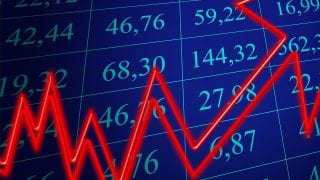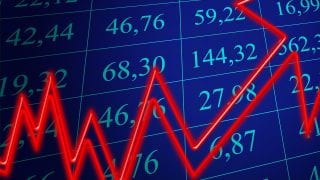After listing a few basic analytical tools you need to analyze the markets in a recent article, this write-up will focus on how to pick the sector and the market direction that will yield maximum profit with minimal risk exposure.
Choosing the Sector First
Analyzing the entire market to find the security with the best profit potential is extremely difficult. That is why you should narrow your search by selecting a single sector first. Additionally, you might be able to differentiate your trades from everyone else because an individual sector might not follow the trend of the overall market.
For example, in 2013 the market started the year with an upward trend from the beginning of January. However, this was not the case across all sectors of the market. Materials producers and commodity-oriented companies experienced a neutral or down market for most of the year. Therefore, choosing a sector like health care or financial stocks in 2013 would have had a dramatic impact on the trend direction and your trading strategy.
The same scenario applies whether you are trading stocks or indexes. You have a choice of multiple indexes — the Dow Jones industrial average, the S&P 500, the NASDAQ, and more. If you remember the dot-com bubble, the Dow Jones industrial average was completely neutral while the NASDAQ was skyrocketing and crashing during the same time.
In 2013, the S&P 500 and the Dow Jones industrial average were both tracking positively. However, if you decided to trade the HUI index for miners, the trend was in the opposite direction. Choosing an individual sector sets you up for identifying a much clearer trend to follow.
Choosing Direction
Seeing a positive sloping trend line and a clear bullish bias is different from choosing direction. While the upward sloping trend line and the bullish bias indicate the sector’s trend, occasionally I could decide to trade against the trend.
While I generally do not trade against the trend in the stock markets, and I suggest the same for most traders, I often have traded counter trend in the metals markets. The metals market has developed an almost predictable pattern of getting squashed as option expiration time approaches. The stock market does not have these repeatable trends very often because stock market capitalization is much larger than the smaller metals markets.
Trading with the trend provides more flexibility and increases the probability of a successful trade. The key benefits of trading with the trend is that my entry and exit points do not have to be exact and my strategies have a clearer direction. The trader who decides to go counter trend has to choose between going bullish, neutral or bearish.
The neutral-oriented option spreads and the short-side option spread create virtually an unlimited number of choices. Too many available options are not a good thing. When I trade with the trend, I only have a limited number of trades I can use successfully. I am limited to at most two of the trades.
For example, in a bullish market I could use either a neutral or a bullish strategy. However, by choosing a heavily favored bullish side, I already have eliminated two thirds of potential option strategies. This raises the probability of a successful trade almost 33% higher relative to engaging in counter-trend trading.
Keep it simple
This reasoning might seem incredibly simple and you might think that everybody would do exactly that kind of thing because it is so obvious. However, I can assure you that many traders go counter trend, attempt to pick the top or bottom, or use neutral strategies when the market is clearly operating with a bullish or bearish bias.
The simple determination of a strong upward bullish trend eliminates most of our potential option strategies. That is exactly what I want. I do not want to have every strategy as a potential for the market, with each one representing a small chance of a successful trade. I want my reading of the market to indicate a narrow band of potentially successful trades that have a much higher probability of earning a profit, or at least of not losing my investment capital.
What do you do after you choose a sector and after you decide on the direction of your potential trade? Your next move will be to select a time frame and the specific vehicle or security for your options trade, which is what I will discuss in future articles.

Billy Williams is a 25-year veteran trader and author. For a free strategy guide, “Fundamentals for the Aspiring Trader”, and to learn more about profitable trading, go to www.stockoptionsystem.com.




